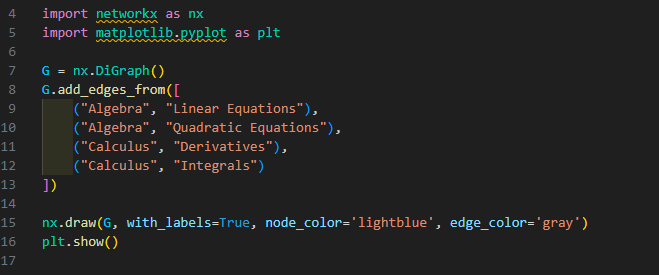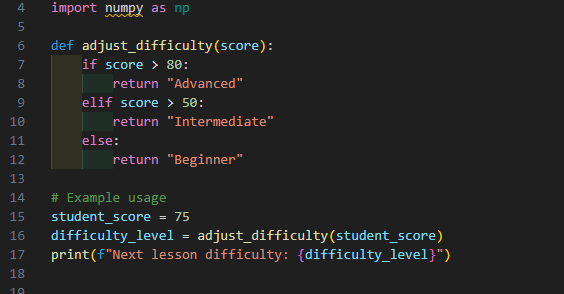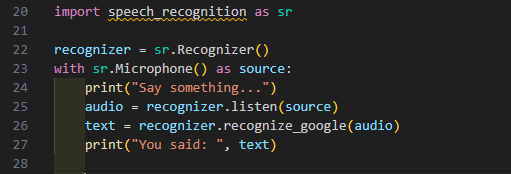It is a very powerful world with AI being a thing. Now, you can have a tutor who never gets tired, who doesn’t roll their eyes at your dumb questions (we all have them, I do, admit it), and who is available 24/7 — no scheduling problems, no coffee breaks, just straight knowledge on demand. That’s the magic of AI-based tutors. But before we start dreaming about how AI could replace your least favorite professors, let’s discuss how to build one in fact.
As someone who has tinkered with AI models for countless hours (and broken them here and there), I have been somewhat obsessed with the notion of an AI tutor. In this guide, I’m going to take you through the main components needed to build one for yourself, from Natural Language Processing (NLP) to knowledge graphs and adaptive learning models. No, this is not a plug-and-play recipe, though it will provide you with a strong road map for your path.
Now, let’s roll up our sleeves!
Essential Features of an AI Tutor
Building a virtual teacher isn’t a fiesta — it’s like assembling IKEA furniture without a manual. You need a little bit of AI, a little bit of machine learning, and a little bit of software engineering. Great, now for the main ingredients:
- NLP (Natural Language Processing) – Because a tutor that doesn’t understand you is just an annoying chatbot.
- Knowledge graph-based learning paths – Helps organize the ‘brain’ of the tutor so it does not go off in different tangents.
- Personalized learning – Because one-size-fits-all is a terrible educational strategy.
- Speech recognition and synthesis – So the tutor can talk back (without the attitude, of course).
- Deployment and scaling – Because a tutor who crashes on finals week is no good.
Step 1: Natural Language Processing (NLP)
NLP is the magical ingredient that allows AI tutors to process students and respond to students, just like a human would (or at least try to). Think about equipping your AI with a brain that can comprehend language, minus the existential crisis one.
Key NLP Features
- Intent recognition – Understanding what the student wants.
- Context management – Being able to remember threads of conversation so the tutor does not have the memory of a goldfish.
- Controlling what tokens to select – Ensuring that the response stays in the domain and is not magical.
For example: NLP on student questions using Hugging Face’s Transformers.
Step 2: Knowledge Graph and Learning Path
You don’t want an AI tutor to jump from algebra to the history of Roman toilets (which, for the record, were quite advanced). A Knowledge Graph (KG) arranges data non-linearly, which makes sure that students do not actually learn in a linear fashion.
Tutorial: How to Build a Knowledge Graph in 5 Steps
- It can be a topic like math, physics, coding, etc.
- Revisit notes for ideas and concepts.
- Link related ideas.
- Link papers across the general knowledge base (Wikipedia, textbook, academic papers)
Example code: Building a knowledge graph with NetworkX

Step 3: Customizing the Learning Path
Real talk — some students can crunch calculus like it’s a board game to play with their buddies, while others can just barely chop things in half. (No hate here — fractions are the real devil.) AI teachers are needed to adapt to different learning speeds.
Reinforcement learning (RL) is such a solution; for example, AI can adjust the difficulty of content based on the performance of the student. If a student zooms through, it speeds up; if they falter, it slows down.
For instance, calling RL algorithms to play with an adaptive learning model.

Step 4: Signal Processing — Audio and Speech Recognition and Synthesis
Use your senses to ride the audio wave! On the other hand, text-based AI tutors do work for students, though many students would rather have a conversation than write text (or they just want to put in zero effort). Lo and behold: speech recognition and synthesis.
Tech Stack
- Speech-to-text: OpenAI’s Whisper or Google’s Speech-to-Text API.
- Text-to-speech: ElevenLabs or Amazon Polly for human-sounding AI voices.
An example for programming: Python’s SpeechRecognition library allows voice input.

Step 5: Deployment and Scaling
Now that you have an AI tutor built, it needs to be deployed where students can easily get to it. Cloud platforms, including AWS, GCP, or Azure, ensure that your AI doesn’t ghost students when traffic surges.
Deployment Options
- Web-based app (Flask/FastAPI backend)
- Mobile Apps to Integrate AI APIs.
- Almost no serverless cloud services (Scalability!).
And here is a sample: Create an AI tutor API (FastAPI).

ChatGPT: Should We Really Be Using It? AI Tutors vs. Generic LLMs
ChatGPT or Gemini and other AI models are great at answering queries at random if you use them for free, but they won’t teach you a subject matter, they won’t track your progress, and they won’t go deep into a specific domain/subject. An AI tutor is personalized to perform the function of education as opposed to rote memorization, which makes it vastly superior for long-form learning.
The Future: AI-Powered Learning
AI tutors aren’t just a fun tech gimmick to try out in the classroom — they’re literally rewriting the future of education. AI might revolutionize how or what we learn, whether it be through personalized learning experiences or assisting underserved communities.
But let’s not get ahead of ourselves — the AI is not going to kill the human teacher (sorry, students). It can’t replace the learning experience, but it can definitely enhance it, making learning more accessible, more efficient, and, dare I say, fun?
Final Thoughts
Combine in one elegant education tool mixed in a bubbling medium of NLP, knowledge representation, adaptive (or dynamic) learning, and speech synthesis! It’s not something you can knock out on a weekend, but the payoff is massive, especially if you fancy yourself building the next-gen AI-based learning assistant.
So, what do you think? Would you create an AI tutor, or are you still having flashbacks related to Clippy in Microsoft Word? Let’s chat!
